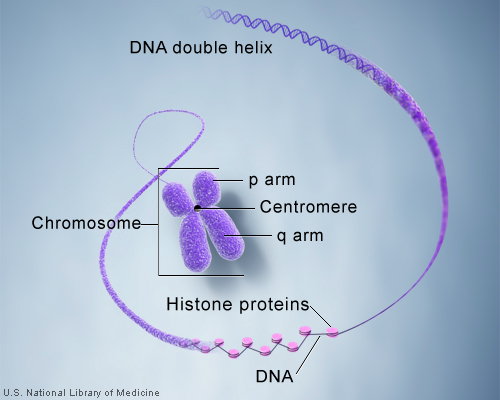
- •Institute of ecological safety
- •Methods of genetic analysis
- •1. The concept of genetic analysis.
- •2. Objects and objectives genetic analysis.
- •3. Methods for genetic research
- •3.1. Hybridological method
- •3.2. Genealogical method
- •3.3. Population-statistical method
- •3.4. Cytogenetic method
- •3.5. Biochemical method
- •3.6. Twins method
- •References
3.4. Cytogenetic method
Cytogenetic method is based on the study of features of chromosomes (karyotype) organisms. Study karyotype allows to detect mutations associated with changes in both chromosome number and structure of some of them. Karyotype examined in cells at metaphase, because in this period of the cell cycle structure of chromosomes is expressed most clearly.

This method is used in the taxonomy of organisms (kariosystematyka). Yes, many species dviynyyuv (species that are difficult and sometimes even impossible to recognize in other features) are distinguished by karyotype. Such cases are known among insects, amphibians, rodents, etc.. For example, in the 30-ies of XX century scientists viewed at different frequencies diseases malaria in adjacent areas. Research mosquito karyotype showed that this is not one kind, as previously thought, and the complex of sibling species, some of which carry malaria parasites, and others - not.
3.5. Biochemical method
Biochemical methods used for the diagnosis of hereditary diseases associated with metabolic disorders. With their help identify proteins and intermediate products of metabolism, this unusual organism, indicating the presence of altered (mutant) genes. We know of more than 500 hereditary human diseases caused by these genes (eg, diabetes).
In recent years, many countries developed and used for public research special programs. The first phase of the program lies in the fact that among the large number of subjects to select likely patients who have some inherited abnormalities. Such a program is called screening program (English sreening - sieving). This stage is usually used a small number of simple, accessible techniques (rapid method). Express methods are based on simple qualitative reaction detection of metabolic products in urine, blood. At the second stage of a refinement (confirmation or rejection of the diagnosis when false-positive reaction in the first stage). It uses accurate chromatographic methods for determination of enzymes, amino acids, etc.
3.6. Twins method
Twins method is to study identical twins (organisms that originate from one zygote). Identical twins are always of the same sex, because they have identical genotypes. Studying these organisms can clarify the role of environmental factors in shaping the phenotype of individuals: different nature of their influence leads to differences in the manifestation of various conditions specific symptoms.
Separate group of genetic engineering methods by which scientists distinguish organisms from individual genes or synthesize them artificially reconstruct certain genes, injected them into the genome of another cell or organism. Genome - a set of genes haploid set of chromosomes of a particular species of organisms. In addition, scientists can combine different types of genes in a single cell, that combine in one individual of hereditary characteristics inherent in these species.
Conclusions
Thus, summing up, we can say that the methods of the study of heredity in humans are of great importance for humanity. Namely genealogical method to determine the degree of risk of inherited disorders in offspring; cytogenetic method gives us knowledge about the structure, the structure of chromosomes, chromosomal disease, biochemical method helps detect abnormalities in blood composition, waste products etc. blyznyukovyy method helps to identify the relative importance of heredity in the formation of the body, by population method can determine the distribution of mutations of gene flow and natural selection in human populations.
